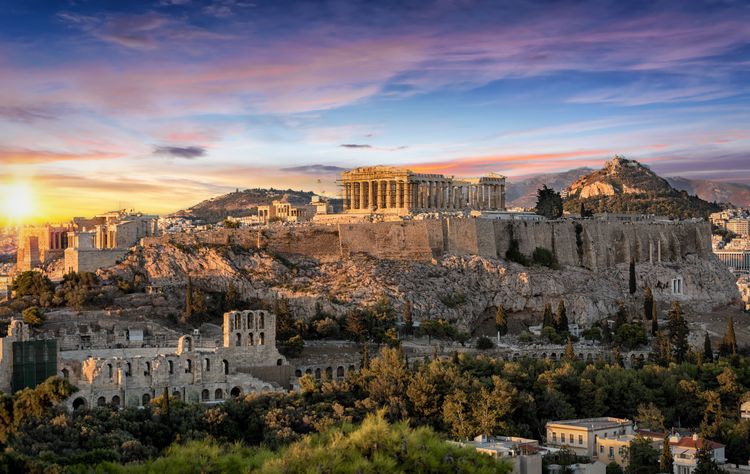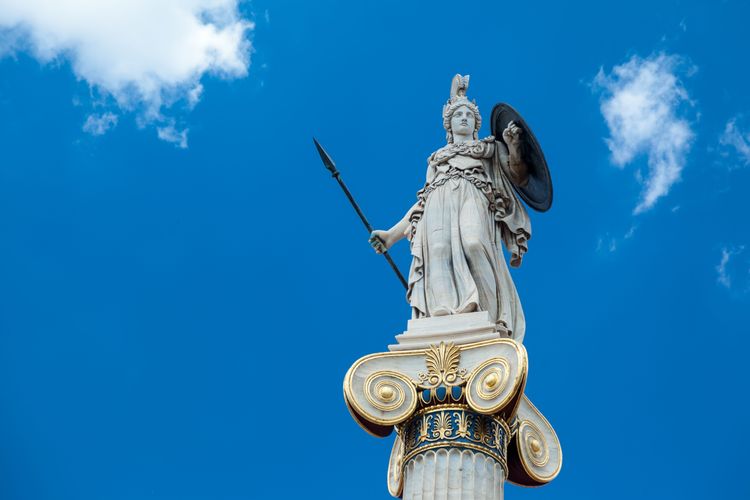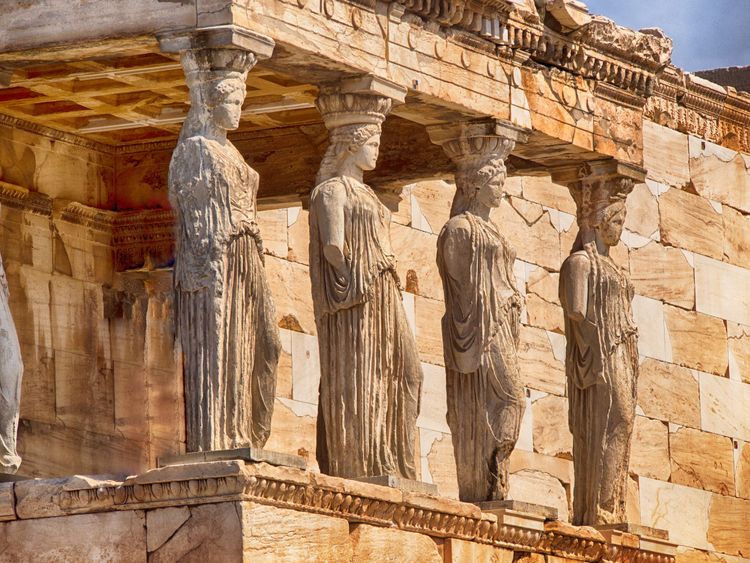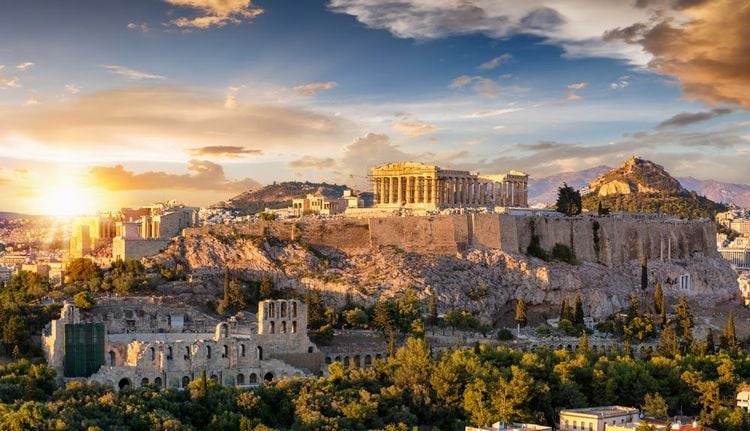The Parthenon has its origins in fascinating Greek mythology. Let's take a quick look back. Daughter of the king of the gods Zeus and the nymph Metis, Athena was the goddess of wisdom, war strategy and justice. At the time, the gods lived in their palaces on Olympus. There were no cities dedicated to them. Zeus then asked all the gods to choose a city where men could honour their cult. Two of them claimed possession of Attica: Athena and Poseidon (Zeus's brother and god of the oceans). After a vote by the inhabitants, it was the goddess who was chosen to become the city's protector. Athens was born.
 Athens
Athens










